Well, a little bit of an update...
The NiMH packs are all functioning correctly, and deliver very close to if not full capacity. They seem to have been awakened very well and I don't anticipate any problems with them...
The NiCds are actually the ones putting up any kind of fight; shorted cells (when discharged too far), and "leakage", meaning that some of the packs in the big array (10AH) are losing their charge on the shelf and pulling down the healthy ones with them. Provided the charge is used within 24 hours or so, self discharge doesn't make up a whole lot of the "usage". After 72 hours or so, the charge is only about 70%ish.
Another problem I have with them is NDV taking hold on certain select cells, robbing the others of a full charge. To compensate for this, fans were added to the box, and now I even go as far as to chill the pack during the later stages of charging. This does not come without it's own set of problems... See
here for more on that.
Here are the pics with the construction details for the 10AH NiCd array:
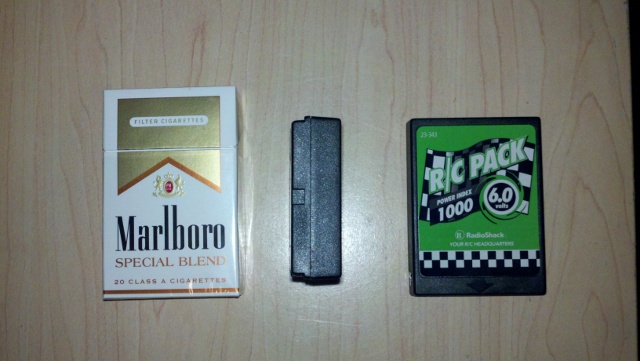
The individual packs that make up the array. There are 20 of these in the box, bringing the total cell count to 100.

The spacing method for providing a gap for cooling air to flow between the packs. It would have been better if these could have been wider, but space is at a premium... Radio Shack doesn't make a bigger project box!

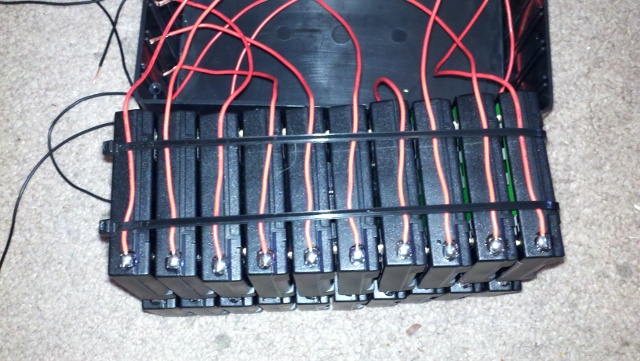
A shot showing the positive side wires connected and chased down the sides of the packs. The negative is similar, as one might imagine.

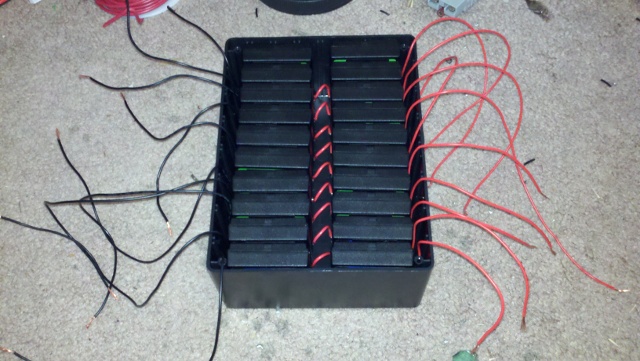
The packs mocked up in the box. As you can see, it really is a tight fit.

The wire chasing across the top, running between each pack. There are two wires running on each side on the very ends.
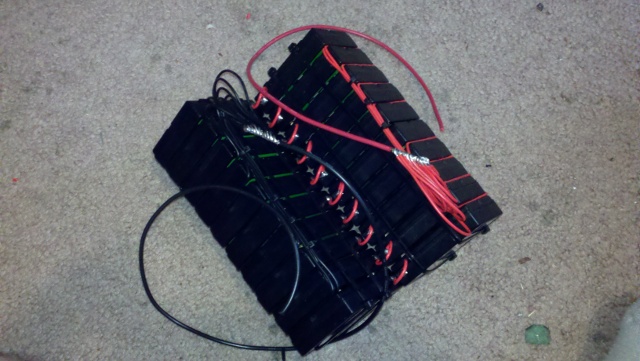
Detail of the jumpers tying each set of two packs together in series.

Here, the main wires have been connected to the individual tethers going to each string. Not immediately visible is the fact that in spite of massive imbalances in the packs, the wiring is set up so that it does not contribute to the problem. 5 positives on one side are the same length as the 5 negatives on the opposing set, resulting in electrically equivalent leads for all 10 strings. IOW, each string has a long and a short lead. They are offset at opposite ends of the pack so that 5 have long positives and short negatives, and the other 5 have short positives and long negatives.
The diode is a blocking diode to allow the charger to power the fans, but the fans stop if the charging stops. I'm still divided on whether or not this should actually be there. My original thinking was good, but I completely forgot the configuration of the meter box when I designed that part of it, and the result is that the volt meter reads high. How high depends on how much charge current is flowing. The fix was to make up another mating connector that tethers the battery to the meter box which essentially shunts across the diode, defeating it entirely. Oh well, live, learn.

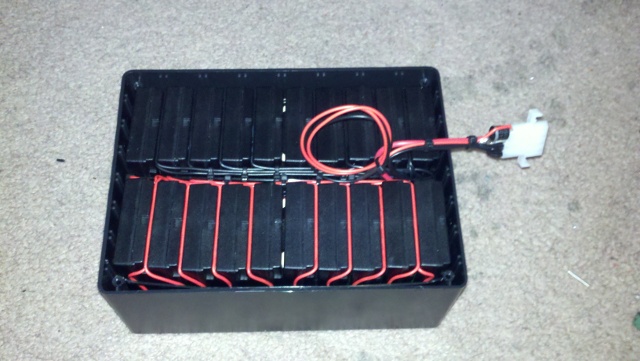
Another shot after dressing up the other end of the main wires.
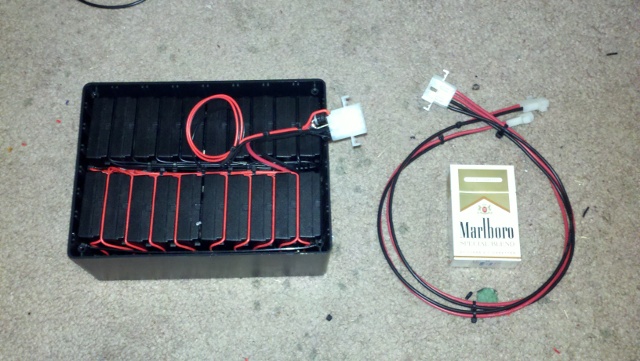
Mocked up before putting the fans in. The tether shown is the first one, and allows charging through one port, and discharging through the other. As mentioned before, this was replaced with a single connector tether.
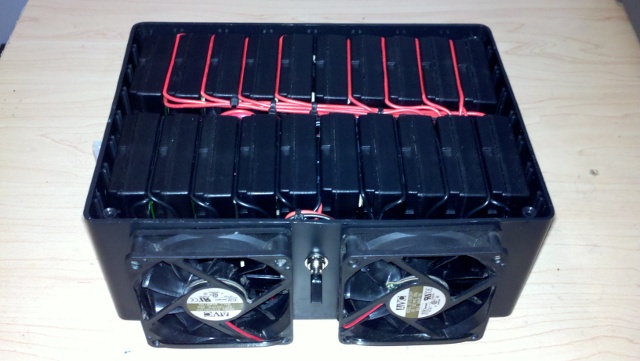
A shot of the cooling fans.
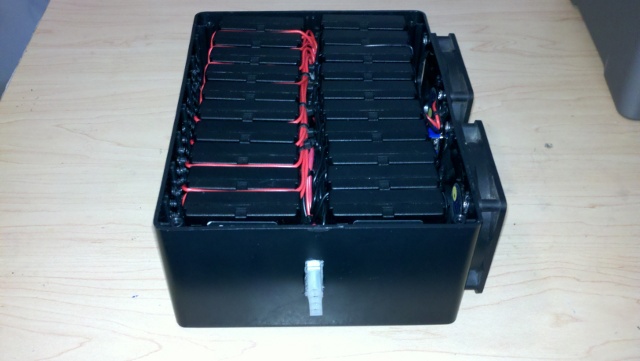
The 4 pin Molex power connector.

The air intake holes. This was fun - A Dremel is a beautiful thing...

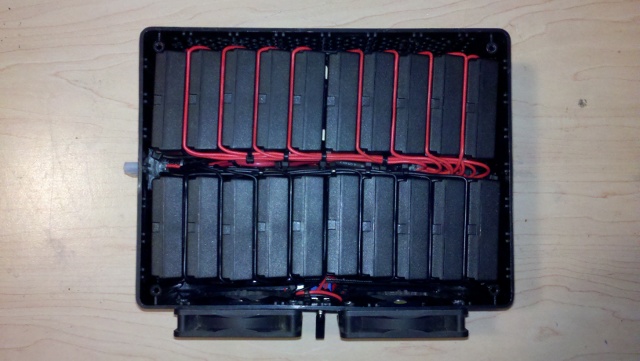
Everything in place, just need to put the cover on.

A shot of the completed battery.
And here is the 9AH NiMH "prototype" 12V nominal array:
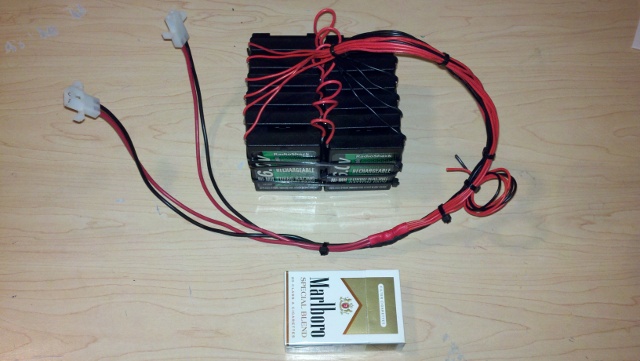
This thing performs virtually flawlessly. When it goes into a box (of similar size), there won't be any need for cooling fans. Very happy with this so far.

Steve